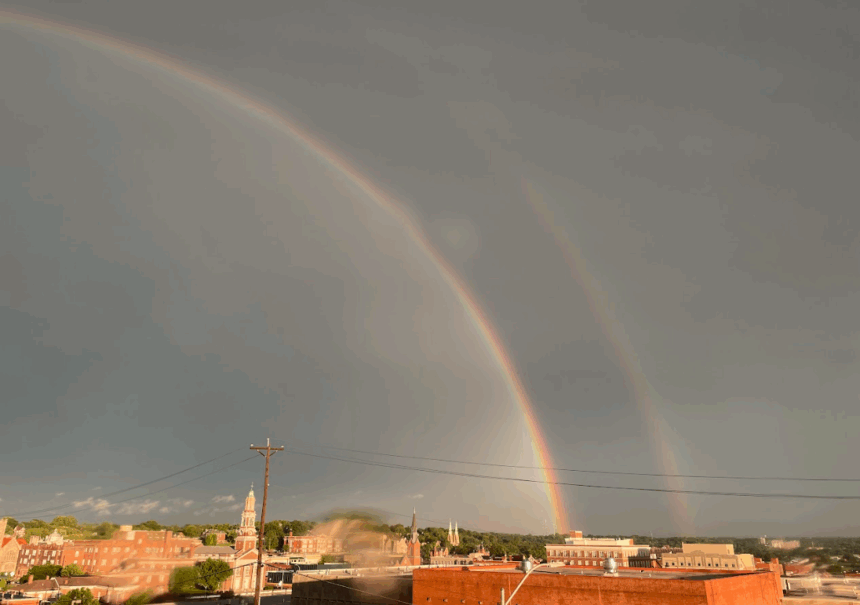The science of rainbows, nature’s prism of color

ST. JOSEPH, Mo. (News-Press NOW) -- Rainbows are often seen as symbols of luck, and if you spot one, consider yourself lucky.
That’s because a few things need to align, both in terms of weather and physics: a little rain, some sunshine, and just the right angle.
To catch that spectacular bow of color in the sky, it all begins with a single raindrop and a ray of sunlight.
Let’s talk physics. When sunlight enters the raindrop, it bends—this is called refraction. Then, it reflects off the back of the drop and bends again as it exits. This process splits the white light into seven distinct colors, from red at the top to violet at the bottom, based on their different wavelengths.
Now that we know how sunlight and raindrops interact, let’s talk about the angle. To see a rainbow, the sun needs to be behind you and lower than 42 degrees above the horizon. That’s why early mornings and late afternoons, around sunrise or sunset, are the best times to catch one, or even two at once.
On occasion, rainbows do come in sets of two. More elusive than a single arch of colors, double rainbows are especially striking. These take place when light is refracted and reflected within a raindrop, not once, but twice. When this occurs, one rainbow is always brighter—called the ‘primary rainbow’. The other ‘secondary rainbow’ is fainter, with less reflected light available to illuminate the second prism of color.
Another curious characteristic of double rainbows is their opposing order of colors. Single rainbows appear with bands of color starting with red at the top, followed by orange, yellow, green, blue, indigo, and violet (ROYGBIV).
In the case of double rainbows, the primary prism follows the typical ROYGBIV scheme, but the secondary rainbow is reversed, with violet coming first and red last from the top down (VIGBYOR). A colorful conundrum understood through the study of optics.




